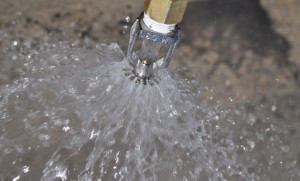
The story is simple and familiar to any experienced property claims professional: a pipe breaks flooding the restaurant downstairs causing it to close for two weeks, or a worker unknowingly drills through a pipe while working on a customer’s equipment which contaminates product in production causing a production shutdown for 72 hours. Either of these events results in a claim for lost profits. The business owner may not know that it should claim lost profits; the claim may say lost sales, revenue, business, production or income. As a claims professional, your client is now asking you to determine what is owed to the party that was affected.
The American Institute of Certified Public Accountants defines the damages owed as follows:
Only lost “net” profits are allowed as damages. Lost “net” profit is computed, in general, by estimating the gross revenue that would have been earned but for the wrongful act reduced by avoided costs. Avoided costs are defined as those incremental costs that were not incurred because of the loss of the revenue. After the net lost profits are determined, any actual profits earned are deducted to compute the damages.
To summarize, the claimant is owed lost sales, less any avoided expenses.
For the example of the restaurant above, the property owner will likely present a claim for the sales they believe are lost, but even if the claimed lost sales are accurate the actual loss of profit is likely much less. The business did not have to purchase food, pay employees, credit card fees, supplies, cleaning, etc., while it was shut down. All of these expenses, and possibly more, were avoided partially or completely. The actual loss to the business is the sales it would have earned less the costs it avoided. Without analyzing and accounting for these costs the property owner will receive a windfall from your client.
Let’s look at the more complex example of the worker who unknowingly drills through a pipe while fixing a machine. The property owner sends a long list of damages including claimed lost production of $40,000. The property owner is asking for lost production, but did they lose sales as a result of the shutdown? Probably not because if a business is shut down, but uses existing inventory or their customers wait a couple of days to get their product, no loss of sales occurred and therefore no profits were lost. Sales may be delayed, but not lost. Additionally, the property owner may have other locations that can help make up lost production.. If the property owner incurred increased costs of production as a result of the event, such as overtime to make-up lost production, the client may owe for the increased costs. However, that is a separate analysis.
If after a thorough analysis, it is determined that the property owner did lose sales, there is still the matter of determining the avoided expenses. In manufacturing cases, the expenses are often complex and based on calculations that spread out (amortize) costs over a large period of time. In addition to the obvious avoided costs such as raw materials that were not used, an analysis of production costs is often necessary to determine total avoided costs. A property owner will often state that these costs are fixed, but their own calculations may show that they assign a cost-based on machine hours or units produced. Without considering these avoided expenses, you may advise your client to pay more than they actually owe.
It is very easy to overlook avoided expenses when calculating lost profits An experienced forensic accountant can determine which expenses are likely avoidable and if further analysis is prudent.
Please feel free to share your questions and thoughts with us.
Robert Fox, CPA
Managing Director, forensic accounting and business income services
Vericlaim, a Sedgwick company